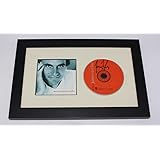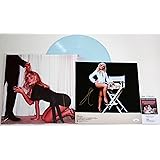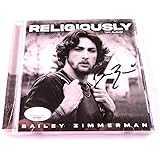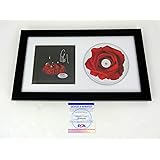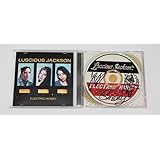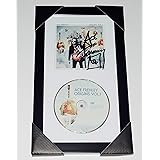It is often observed that a significant percentage of individuals, perhaps as many as 70%, admit to feeling their daily attire could benefit from an upgrade beyond the merely “basic.” This sentiment often arises despite having a wardrobe full of clothes. The video above, showcasing ‘basic vs better outfit’ transformations, succinctly illustrates how minor adjustments can yield substantial visual improvements. However, understanding the underlying principles for elevating outfits is crucial for consistent style success.
When an outfit is considered ‘basic,’ it typically lacks visual interest, depth, or a clear focal point. These ensembles are often simple in silhouette, monochromatic without contrasting textures, or styled without intentional accessories. Yet, transforming a simple look into a polished, better outfit is an attainable goal for anyone willing to apply a few strategic principles.
The Foundational Elements of a Better Outfit
To achieve a more refined aesthetic, focus must be placed on several key areas that collectively contribute to an outfit’s overall impact. These elements are not about buying entirely new clothes; rather, they involve thoughtful styling of existing pieces and strategic additions.
Mastering the Art of Accessorizing
Accessories are arguably the most potent tools for elevating outfits. Imagine a plain white tee and jeans: this is a classic basic. However, when a statement necklace is added, or a chic belt cinches the waist, the outfit is immediately transformed. Similarly, a structured handbag or a pair of elegant shoes can pull an entire look together.
It is often suggested that jewelry should complement the neckline and your personal aesthetic. Scarves, on the other hand, can introduce color, pattern, and texture, effortlessly transitioning a simple blouse into a more sophisticated ensemble. The thoughtful selection of these smaller items is frequently underestimated, yet their impact on overall style is immense.
The Power of Thoughtful Layering
Layering is not solely for warmth; it is a fundamental styling technique used to add dimension and complexity to an outfit. A simple t-shirt under an open button-down shirt, perhaps with a denim jacket over it, creates visual depth that a single layer cannot achieve. This method allows for the mixing of textures and colors, thereby enhancing the overall appeal.
In colder climates, layering is a necessity; however, its application in fashion extends beyond practical concerns. A well-placed vest or an unbuttoned cardigan can break up the monotony of an outfit, offering visual interest and contributing to a more dynamic silhouette. The strategic use of layers can truly distinguish a basic look from a better outfit.
The Importance of Fit and Proportions
A poorly fitting garment can undermine even the most expensive clothing. Clothes that are too baggy can appear sloppy, while those that are too tight may seem ill-chosen. Emphasis is always placed on fit for a reason; a well-tailored piece instantly elevates one’s appearance.
Understanding your body’s proportions and dressing to flatter them is also critical. For instance, pairing a voluminous top with slim-fitting bottoms, or vice versa, helps create a balanced silhouette. This deliberate attention to how garments sit on the body is a hallmark of a truly better outfit.
Integrating Texture and Fabric
The interplay of different textures can add significant depth and richness to an outfit. A monochromatic look, while sometimes considered basic, can be remarkably elevated through texture blocking. Consider pairing a chunky knit sweater with sleek leather pants, or a silk blouse with a tweed skirt.
Such combinations introduce tactile and visual interest, making the ensemble far more engaging than if all pieces were of a similar smooth cotton. The choice of fabrics also plays a role; high-quality materials often have a better drape and feel, contributing to a more polished overall appearance. Therefore, attention to texture is a key differentiator for elevating outfits.
Strategic Use of Color and Print
While neutral colors form the backbone of many wardrobes, the judicious addition of color or print can transform a basic outfit. This does not necessitate wearing bright, bold hues head-to-toe. Rather, a pop of color in an accessory—a vibrant scarf, a colorful bag—can provide a striking contrast and elevate the visual appeal.
Prints, whether subtle pinstripes or bold florals, introduce an element of personality and sophistication. When incorporating prints, it is often advised that one print be the dominant feature, with other pieces remaining neutral or complementing colors. This approach ensures the outfit appears cohesive rather than chaotic, moving it firmly into the ‘better outfit’ category.
Transforming Your Daily Looks into a Better Outfit
The journey from a basic to a better outfit is paved with intentional choices and an understanding of how individual elements interact. It involves a shift in perspective, moving from simply covering oneself to thoughtfully curating an ensemble. Consider the example of a simple button-down shirt. Worn casually untucked, it serves its basic purpose. However, when it is neatly tucked, sleeves are carefully cuffed, and a stylish watch is worn, it signals a more intentional and polished look.
Attention to the smaller details, such as ensuring clothes are wrinkle-free and shoes are clean, also makes a considerable difference. These subtle efforts are consistently observed in those who effortlessly project a better outfit aesthetic. It is not about adhering strictly to fleeting trends, but rather about cultivating a personal style that feels authentic and looks refined.
Ultimately, the goal is to consistently choose to elevate outfits beyond the everyday. This iterative process of learning, experimenting, and refining one’s approach to personal style contributes significantly to a more confident self-presentation. The pursuit of a truly better outfit is an ongoing and rewarding endeavor for anyone interested in fashion.



